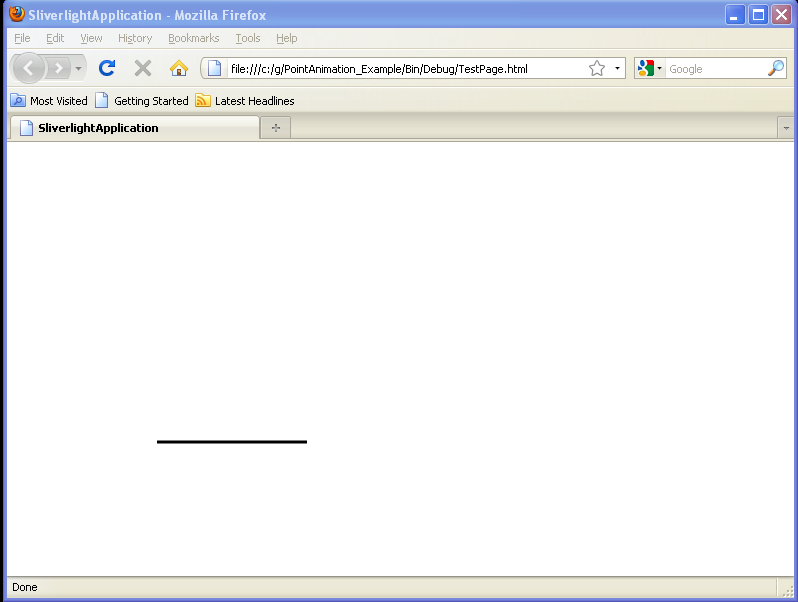PointAnimation Example

<UserControl x:Class='SilverlightApplication3.MainPage'
xmlns='http://schemas.microsoft.com/winfx/2006/xaml/presentation'
xmlns:x='http://schemas.microsoft.com/winfx/2006/xaml'
xmlns:d='http://schemas.microsoft.com/expression/blend/2008'
xmlns:mc='http://schemas.openxmlformats.org/markup-compatibility/2006'
mc:Ignorable='d'
d:DesignWidth='640'
d:DesignHeight='480'>
<Canvas x:Name="LayoutRoot" Background="White">
<Canvas.Resources>
<Storyboard x:Name="PointAnimationExample">
<PointAnimation From="50, 50"
To="300, 300"
Duration="00:00:05"
Storyboard.TargetName="TheLine"
Storyboard.TargetProperty="StartPoint" />
</Storyboard>
</Canvas.Resources>
<Path Stroke="Black"
StrokeThickness="3"
Loaded="Path_Loaded">
<Path.Data>
<LineGeometry x:Name="TheLine"
StartPoint="150, 50"
EndPoint="150, 300" />
</Path.Data>
</Path>
</Canvas>
</UserControl>
//File: Page.xaml.cs
using System;
using System.Collections.Generic;
using System.Linq;
using System.Net;
using System.Windows;
using System.Windows.Controls;
using System.Windows.Documents;
using System.Windows.Input;
using System.Windows.Media;
using System.Windows.Media.Animation;
using System.Windows.Shapes;
namespace SilverlightApplication3
{
public partial class MainPage : UserControl
{
public MainPage()
{
InitializeComponent();
}
private void Path_Loaded(object sender, RoutedEventArgs e)
{
PointAnimationExample.Begin();
}
}
}
Related examples in the same category